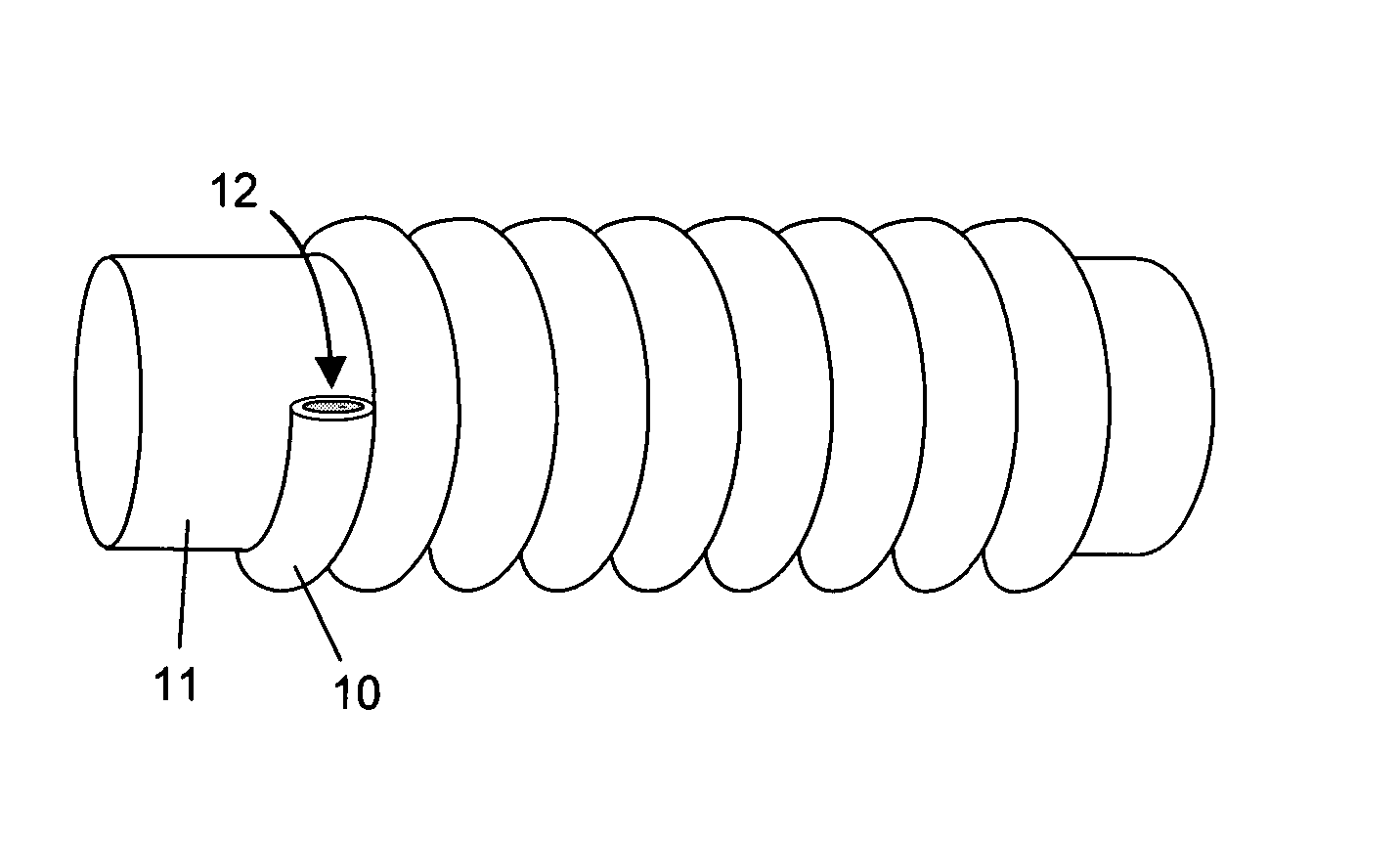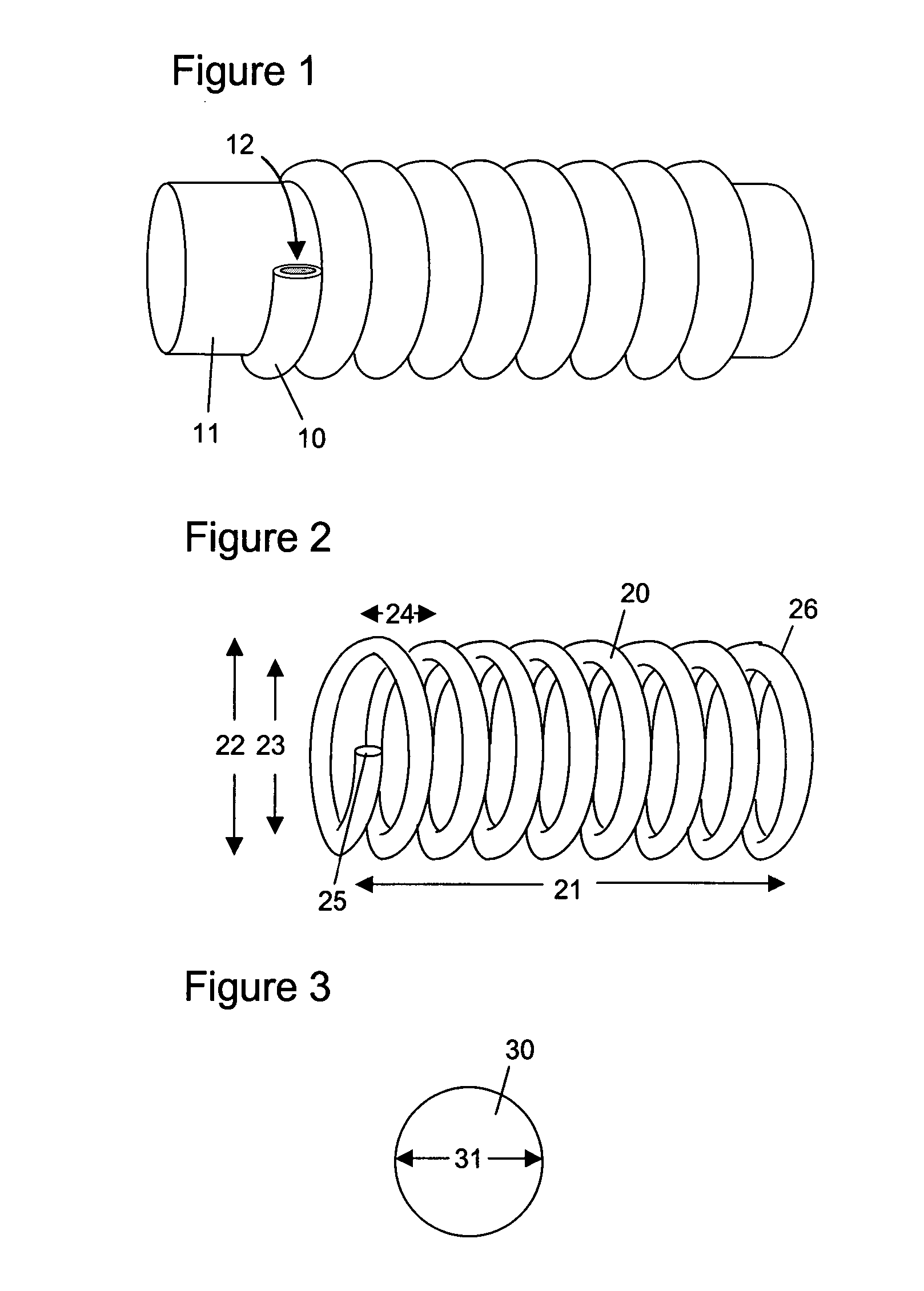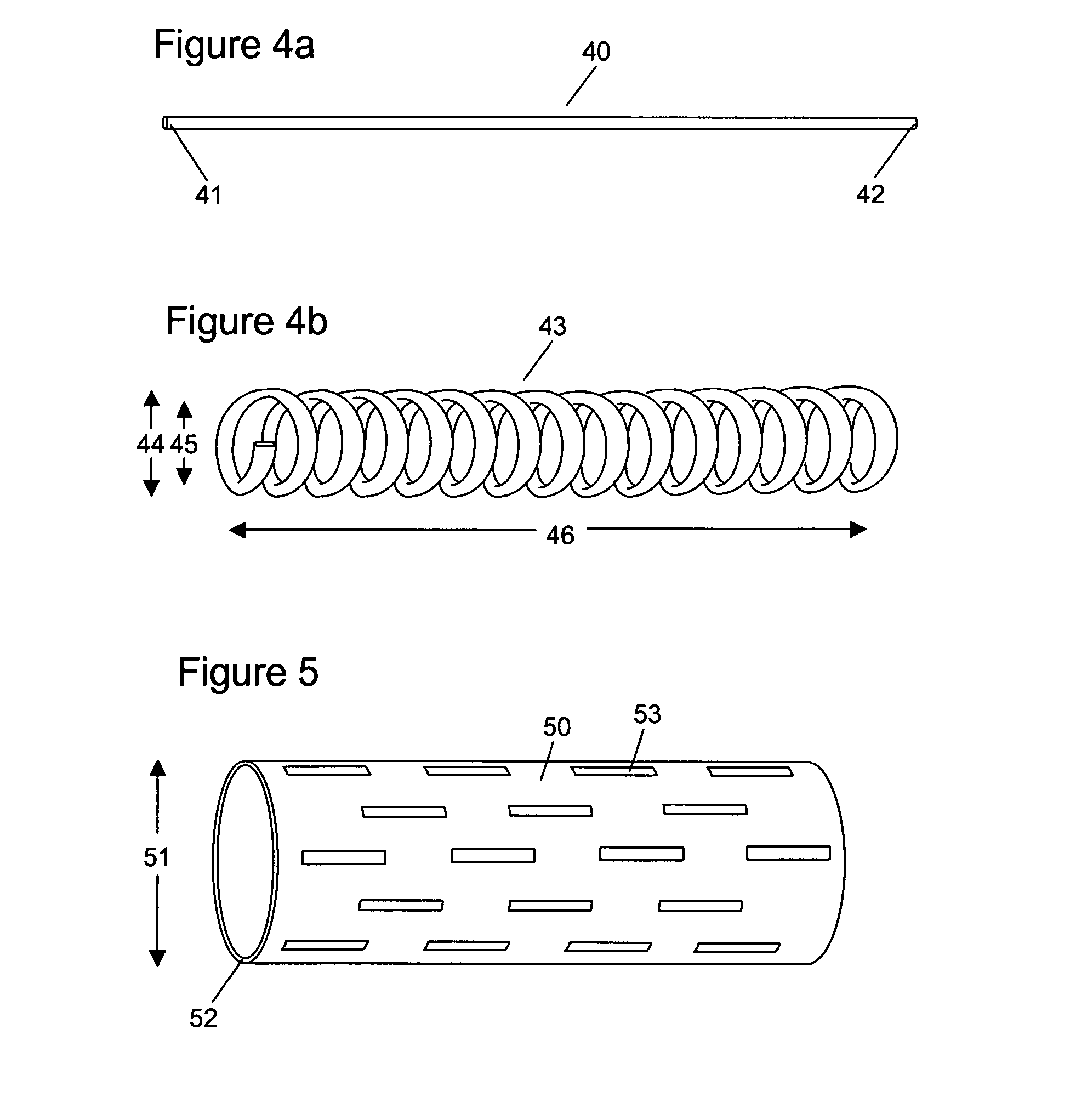Hydrophilic shape memory insertable medical articles
a technology hydrophilic shape, which is applied in the field of insertable medical articles, can solve the problems of hyperplasia and restenosis, metals, including nitinol, not providing an ideal biocompatible surface, and less than ideal for use in the body, and achieves a high degree of resiliency and is resistant to detrimental fracturing or cracking
- Summary
- Abstract
- Description
- Claims
- Application Information
AI Technical Summary
Benefits of technology
Problems solved by technology
Method used
Image
Examples
example 1
Preparation of Maltodextrin-Methacrylate Macromer (MD-Methacrylate)
[0203] To provide MD-methacrylate, the following procedure was performed. Maltodextrin (MD; Aldrich; 100 g; 3.67 mmole; DE: 4.0-7.0) was dissolved in dimethylsulfoxide (DMSO) 1,000 mL with stirring. The size of the maltodextrin was calculated to be in the range of 2,000 Da-4,000 Da. Once the reaction solution was complete, 1-methylimidazole (Aldrich; 2.0 g, 1.9 mL) followed by methacrylic-anhydride (Aldrich; 38.5 g) were added with stirring. The reaction mixture was stirred for one hour at room temperature. After this time, the reaction mixture was quenched with water and dialyzed against DI water using 1,000 MWCO dialysis tubing. The MD-methacrylate was isolated via lyophylization to give 63.283 g (63% yield). The calculated methacrylate load of macromer was 0.33 μmoles / mg of polymer
example 2
Synthesis of Aminated Polyalditol
[0204] Vacuum oven-dried Polyalditol PD60 (10.00 g) was dissolved with anhydrous dimethyl sulfoxide, DMSO, (50 mL) in a 120 mL amber vial. In a separate 30 mL amber vial, 1,1′-carbonyldiimidazole, CDI, (3.00 g) was dissolved in dry DMSO (25 mL). The CDI solution was poured into the maltodextrin solution and purged with nitrogen gas before being capped. The reaction solution was placed on a rotary shaker for 20 minutes. Into a separate 120 mL amber vial, 1,6-diaminohexane (10.80 g) was warmed to 45° C. and dissolved in dry DMSO (10 mL) and a Teflon stir bar was inserted and placed on a stir plate. The maltodextrin / CDI solution was slowly poured into the stirred diamine solution after 20 minutes. Once the addition was complete the reaction vial was transferred into a 55° C. oven and allowed to stir overnight. The next day, the reaction solution was precipitated into 1 liter tetrahydrofuran, THF, and a white precipitate formed. The mixture was stirred ...
example 3
Poly(ethylene glycol)3350-di(imidazolyl carbamate)
[0205] Vacuum oven-dried poly(ethylene glycol), MW˜3350, (6.70 g) was dissolved with anhydrous tetrahydrofuran, THF, (20 mL) in a 60 mL amber vial with slight heating (40° C.). In another 60 mL amber vial 1,1′-carbonyldiimidazole, CDI, (0.811 g) was dissolved with 10 mL dry THF. A Teflon stir bar was inserted into the CDI solution and placed on a stir plate. The PEG solution was pipetted into the CDI solution while stirring at room temperature. The reaction vial was purged with nitrogen gas once the addition was complete. The reaction was allowed to stir at room temperature for two hours. After two hours, the reaction solution was precipitated into 1 liter of chilled, anhydrous diethyl ether while stirring. The ether solution was decanted, and the precipitate was rinsed three more times (3×1 L) with fresh, anhydrous ether while stirring. The precipitate was collected by vacuum filtration using a water-aspirator, Büchner funnel, and ...
PUM
| Property | Measurement | Unit |
|---|---|---|
| molecular weight | aaaaa | aaaaa |
| molecular weight | aaaaa | aaaaa |
| molecular weight | aaaaa | aaaaa |
Abstract
Description
Claims
Application Information
 Login to View More
Login to View More - R&D
- Intellectual Property
- Life Sciences
- Materials
- Tech Scout
- Unparalleled Data Quality
- Higher Quality Content
- 60% Fewer Hallucinations
Browse by: Latest US Patents, China's latest patents, Technical Efficacy Thesaurus, Application Domain, Technology Topic, Popular Technical Reports.
© 2025 PatSnap. All rights reserved.Legal|Privacy policy|Modern Slavery Act Transparency Statement|Sitemap|About US| Contact US: help@patsnap.com



